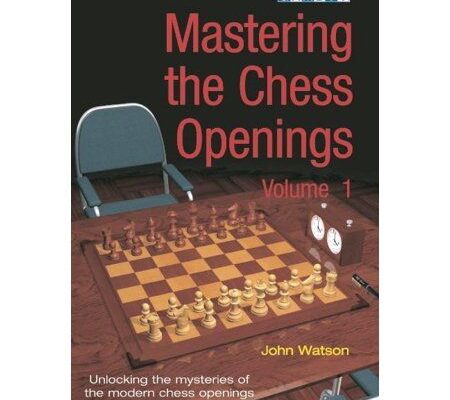In the intricate world of chess, the pursuit of mastery is a journey paved with countless hours of study and contemplation. From the very first move, players navigate a vast landscape of possibilities, where success often hinges on a dual mastery: the precision of opening theory and the profound art of strategic understanding. It is in the elegant interplay of these two pillars that true chess potential is unlocked.
- The Lure of the Opening: The Najdorf Sicilian as a Grandmaster`s Canvas
- Building a Repertoire: From Main Lines to Minor Deviations
- The Art of Strategy: Shaping the Battle Beyond the Books
- Foundational Principles: The Soul of the Game
- From Foundations to Exploitation: Identifying and Targeting Weaknesses
The Lure of the Opening: The Najdorf Sicilian as a Grandmaster`s Canvas
The opening phase of a chess game is often perceived as a critical determinant of future success. While some dismiss it as mere memorization, the reality is far more nuanced. A well-chosen and deeply understood opening repertoire sets the stage, providing a favorable pawn structure, active pieces, and a clear plan. Consider, for instance, the Najdorf Variation of the Sicilian Defense – a name that, for many 1.e4 players, evokes a mixture of admiration and trepidation.
This dynamic and often aggressive opening, initiated after 1.e4 c5 2.Nf3 d6 3.d4 cxd4 4.Nxd4 Nf6 5.Nc3 a6, has been a battleground for grandmasters for decades. Its appeal lies in its versatility: it allows Black to combine sharp, attacking play with deep, positional maneuvering. It is not merely a sequence of moves to be learned by rote, but a complex system that demands strategic insight and tactical awareness.
Building a Repertoire: From Main Lines to Minor Deviations
Mastering an opening like the Najdorf necessitates a comprehensive approach. It involves dissecting White`s primary responses – from the classical 6.Bg5 and 6.Be3 to more positional choices like 6.Be2 and 6.Bc4. Each variation presents a unique set of challenges and opportunities, requiring specific plans and tactical motifs. The goal is not just to survive the opening but to emerge with a distinct advantage, or at the very least, a comfortable, playable position.
Furthermore, a truly robust grandmaster repertoire anticipates the opponent`s attempts to steer clear of main lines. The so-called “Anti-Sicilians” and other minor variations played on move 2 or 3 – such as the Grand Prix Attack (2.Nc3), the Alapin Variation (2.c3), or 3.Bb5+ – are often designed to surprise. A comprehensive understanding ensures that a player is never caught off guard, maintaining control and adhering to the core principles of sound development, even when the path deviates from the well-trodden theoretical highways.
“The opening provides the map, but strategy is the compass that guides you through the uncharted territories of the middlegame.”
The Art of Strategy: Shaping the Battle Beyond the Books
While a strong opening repertoire provides an excellent foundation, it is in the vast and often chaotic realm of the middlegame that strategic acumen truly shines. Chess is far more than tactical skirmishes; it is a profound struggle of ideas, positional advantages, and the slow, deliberate accumulation of small benefits. This is where the art of chess strategy takes center stage.
Foundational Principles: The Soul of the Game
Any journey into strategic mastery must begin with the fundamentals. As the legendary Philidor famously stated, “Pawns are the soul of chess.” Understanding pawn structures – their strengths, weaknesses, and their profound impact on piece activity and control of key squares – is paramount. Weak pawns invariably lead to weak squares, and the ability to identify and exploit these vulnerabilities is a hallmark of a strong strategic player. Conversely, knowing how to fortify one`s own position against such attacks is equally vital.
Beyond pawns, the mastery of individual pieces is crucial. Each piece, from the nimble knight to the powerful rook dominating an open file or the dreaded seventh rank, possesses unique characteristics. Learning how to activate underperforming pieces, exchange them advantageously, and ensure the safety of one`s own king through coordinated piece play are all central tenets of middlegame strategy.
From Foundations to Exploitation: Identifying and Targeting Weaknesses
The progression in strategic understanding moves from basic concepts to advanced application. Once the fundamentals are grasped, the focus shifts to a more aggressive, yet still deeply strategic, approach: identifying and exploiting the opponent`s weaknesses. This requires a keen analytical eye and the ability to discern the critical targets on the board. Is it a vulnerable pawn? An exposed king? Or perhaps poor piece coordination that can be disrupted?
Effective strategic play involves not only pinpointing weaknesses but also prioritizing them. Not all weaknesses are created equal, and a skilled player understands which ones offer the most significant returns. This often necessitates a blend of strategic planning and precise tactical calculation. The two are inextricably linked; a brilliant tactical combination often arises from a strategically superior position, and a sound strategic plan frequently requires tactical precision to execute.
Ultimately, the path to chess mastery is not about choosing between opening knowledge and strategic understanding, but embracing both as complementary disciplines. A well-prepared opening provides a solid launchpad, while strategic depth allows a player to navigate the complexities of the middlegame and convert positional advantages into victories. It is a continuous cycle of learning, applying, and refining, a delightful challenge that ensures the game of chess remains endlessly fascinating and rewarding for those who dare to delve into its depths.







